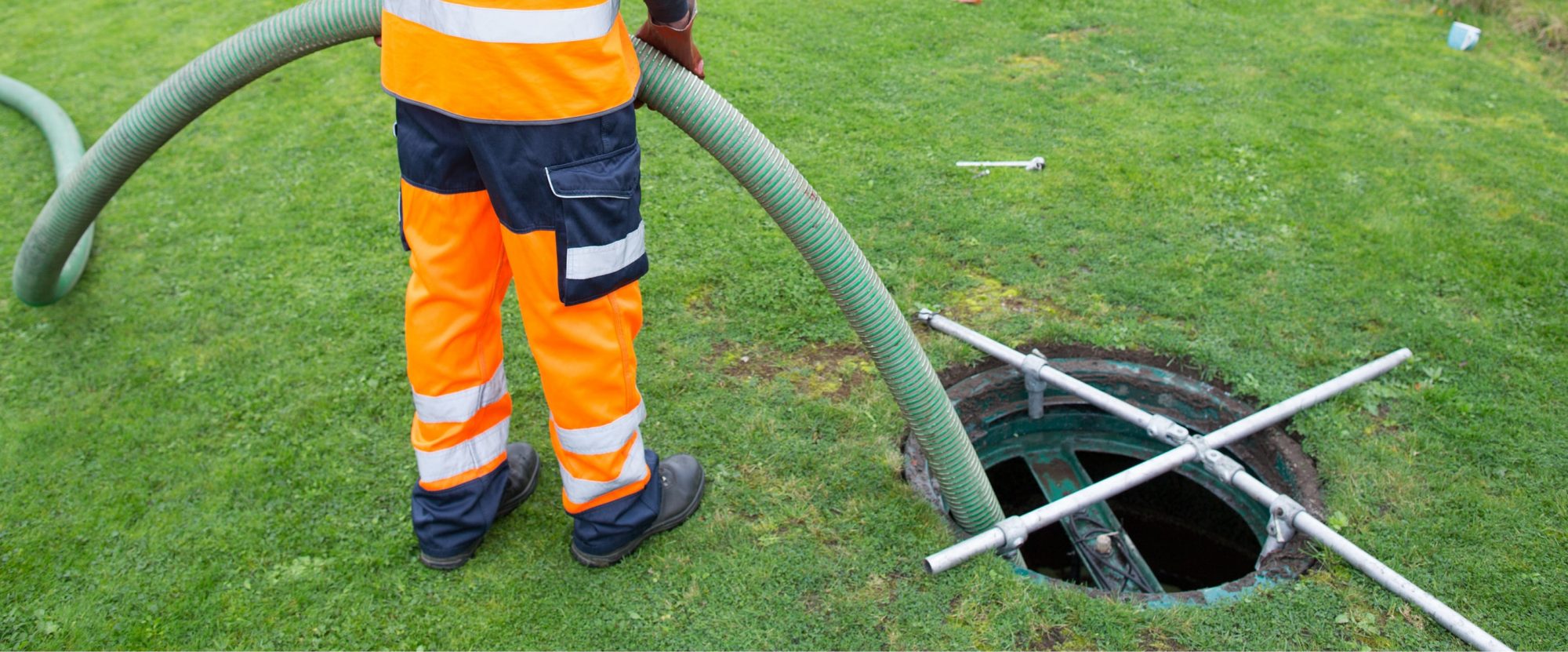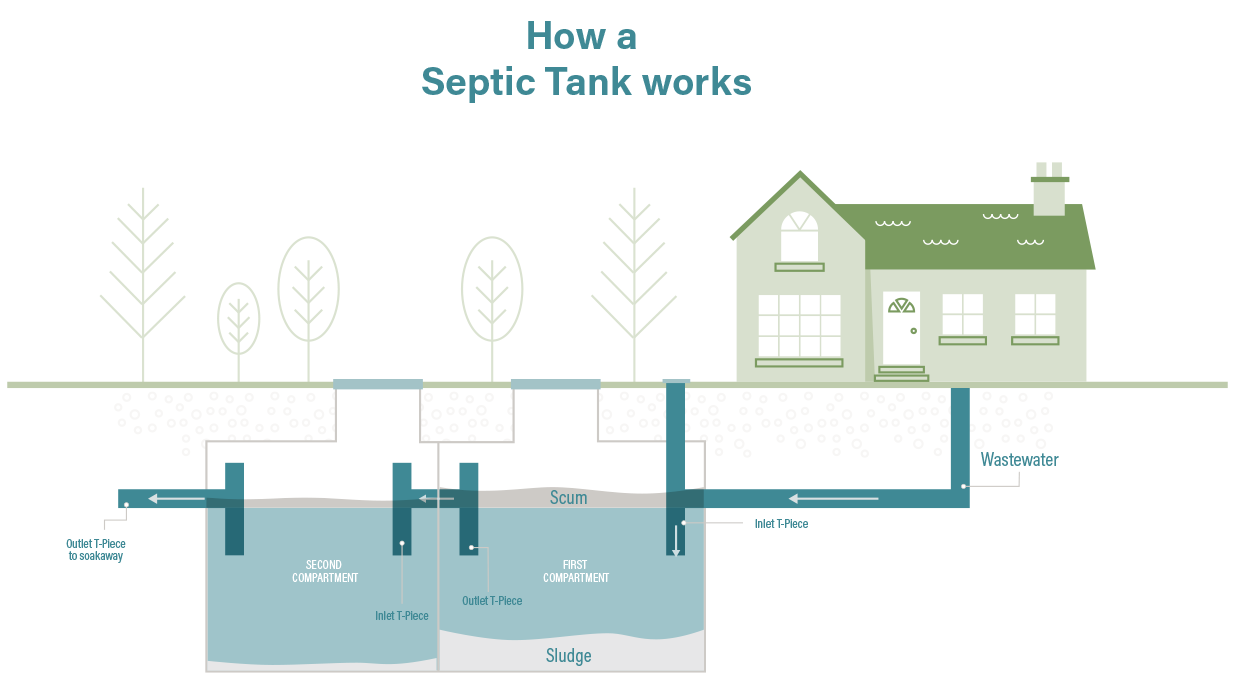How do septic tanks work?
Septic tanks are designed to collect sewage and wastewater from households that are not connected to the mains sewer. There are two main types of septic tank applications:
Septic tank with a soakaway
These can be constructed from a variety of materials including brick or concrete. More modern systems are often made from fibre glass or polyethylene.
A septic tank is designed to settle and retain the waste solids produced from a property. This is usually achieved with a number of chambers within the tank and the use of T pipes or baffles. A septic tank should only need emptying when the solids levels have built up within the tank. The settled liquid then drains away through soakaway or drainage field. The drainage field is designed to treat the waste effluent by the action of naturally occurring bacteria. For this process to work successfully the septic tank must be working efficiently and the subsoil be free draining.
Over a period of time fine suspended solids are passed through the septic tank into the drainage field, the bacteria also produce some biomass, silting up the drainage field. This reduces the efficiency of the drainage field and the rate at which it is able to discharge the effluent into the subsoil. Eventually the flow into the system from the home is greater than the flow out to the subsoil causing the drainage field to back up. This can then lead to the effluent leaching to the surface or the drainage backing up to the house.
This progression is accelerated by larger volumes of water produced by a modern home, along with an array of chemicals and detergents in the waste. These inhibit the settlement process in the tank and the biological processes in the drainage field. These factors combined with current environmental and building specifications can mean an area where a septic tank drainage field was once acceptable is no longer compliant.
Septic tank with no soakaway
If your septic tank discharges directly to a surface water, (ditch, stream, river, lake or pond), it no longer conforms to the Environment Agencies requirements and under their guidelines you will need to replace or upgrade your treatment system by 1 January 2020, or when you sell your property if before this date.
CSG’s Septic Tank Top Tips
- Use biologically friendly household cleaning products
- Have the tank de-sludged regularly, ideally every six months
- Don’t allow commercial chemicals, medicines or hygiene products to enter the system
- Don’t use large quantities of biological cleaning products or bleach
- Bacteria in the tank is vital to the biological process


